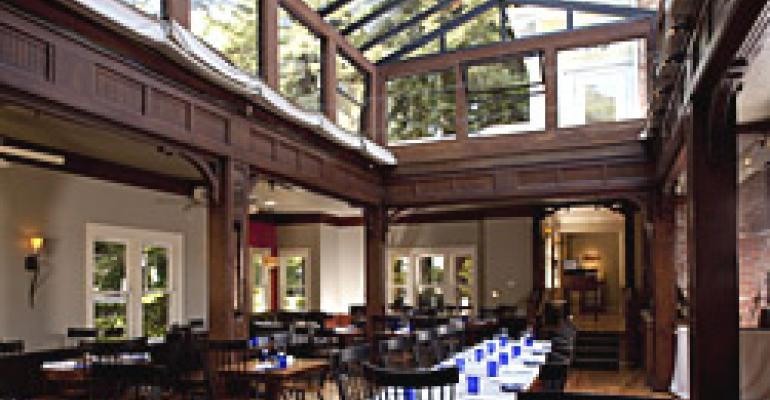Exploding the notion of bulk wine as plonk, some restaurant operators are serving quality vino in the informal, economical spirit of the day — on tap at the bar.
Wine on tap has significant advantages, according to the pioneers who stock well-known, premium wines in barrels and sell them by the glass and carafe in a fashion similar to draft beer.
For starters, lower packaging and distribution costs and volume economies allow vintners to charge less for wine in barrels than they would for bottles. In turn, operators can offer attractive prices and still have a good profit margin. What’s more, the airtight barrel preserves wine far better than corks, stoppers or other methods. Finally, tap wines are friendlier to the environment than bottles, because they require much less packaging and shipping.
“I think it’s the future of wine by the glass,” said John Hulihan, vice president beverage and service for the 10-unit, San Francisco-based Lark Creek Restaurant Group.
At Tavern on Lark Creek in Larkspur, Calif., an eight-barrel tap wine system accounts for 30 percent of wine-by-the-glass volume. A wine like 2008 Saintsbury Garnet Pinot Noir, which Hulihan said might fetch $11 to $14 a glass in other restaurants, sells for $8.75 at the Tavern. “It generates buzz in the dining room,” he said.
Wine from the tap “will be a great demystifier” for people turned off by the ritual of bottle service, said Michael Roper, co-owner of Hopleaf, a craft beer bar and restaurant in Chicago, and prospective owner of a new restaurant there that will have tap wine. “It will become more of a people’s drink,” he said.
More than a few operators with an interest in this subject have eyed Two Urban Licks in Atlanta. The casual restaurant offers 42 wines on tap, an even number of reds and whites, producing $1.2 million in annual sales, according to Todd Rushing, co-founder and partner of Concentrics Restaurants, the 15-unit multi-concept restaurant company based there.
“If people understood how really simple this is, it would be more widespread,” said Rushing.
The 42 stainless-steel barrels are showcased in a 23-foot-tall, temperature-controlled wine tower in the dining room. Wines by esteemed producers like Andrew Geoffrey, Trefethen, Coppola and Miner are included. The wine flows by gravity down to taps at the bar. As the wine is depleted, inert nitrogen gas flows into the barrel to preserve the remaining wine. A similar 16-barrel wine system is in place at Tap, Concentrics’ Atlanta gastropub concept, as well.
While the use of tap wine is somewhat novel, it has been around for some time. In the 1970s, bars served generic Chablis and Rhine wine on draft, according to Roper. “But it was really, really bad wine,” he said. “Back then, no one thought draft was a medium for better wine.”
But today, Roper said, the rising costs of glass, corks and shipping, and the environmental impact of packaging and transportation have vintners looking at bulk formats for their best wines. According to Hulihan, producers may cut costs by as much as 20 percent by barreling rather than bottling.
Producers may be further encouraged to barrel by the warm reception tap wines are getting in some quarters, particularly when the wines are outstanding in quality and reasonably priced. A case in point is one of the boutique wines that Rushing taps at Two Urban Licks. It’s a barrel of estate-grown cabernet franc from a prominent Napa Valley winemaker, equivalent to six-and-a-half cases of bottles, which costs him $2,300.
“If you break it down, my cost equals $55 a bottle,” he said. “That wine would be priced at $150 on a restaurant wine list, but the most I charge for it is $72 for a five-glass carafe.”
Although more winemakers seem to be offering tap wines, sourcing them can still be challenging. When Rushing first approached winemakers five years ago, “most everybody thought I was crazy,” he said. Since then, however, he has done business with more than 70 wineries, typically small-scale producers of 10,000 or fewer cases, in California, Washington, Oregon, Austria and Chile.
In Hulihan’s view, “most wine producers either don’t know about it yet or just haven’t factored it into their sales and distribution strategy.” Roper said he might have an easier time finding tap wine for his new restaurant from European rather than domestic producers, because it is so common there.
“If you order a glass of wine in Italy or Greece, it’s probably a local wine that goes well with the food, dispensed from a tap,” Roper said.

